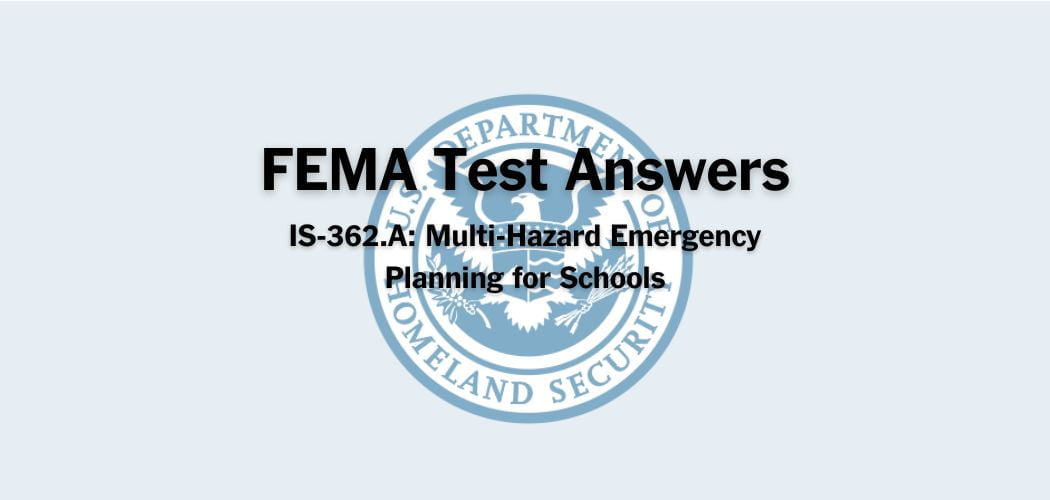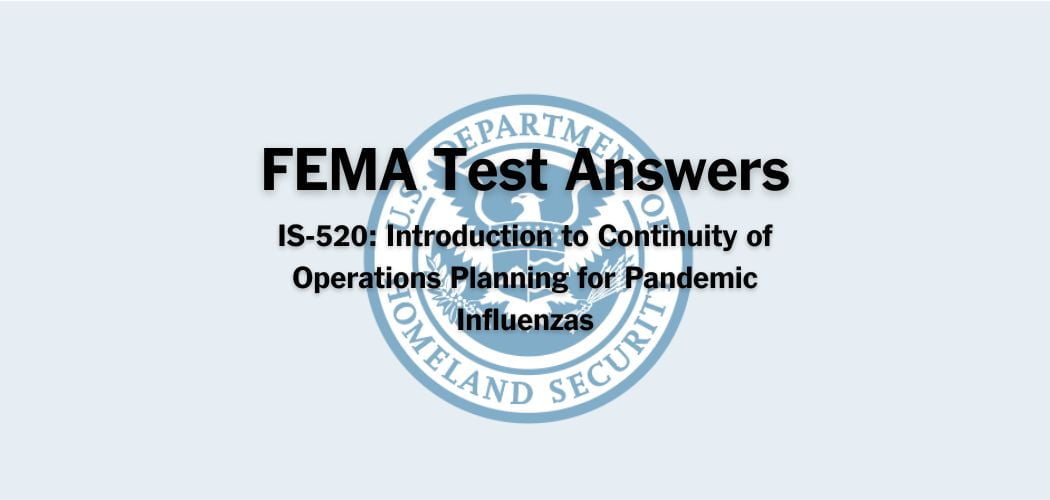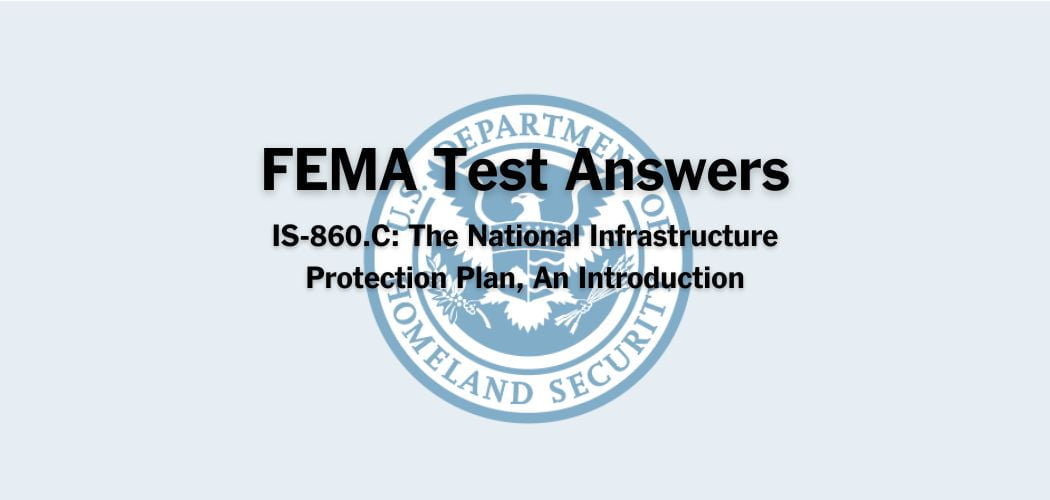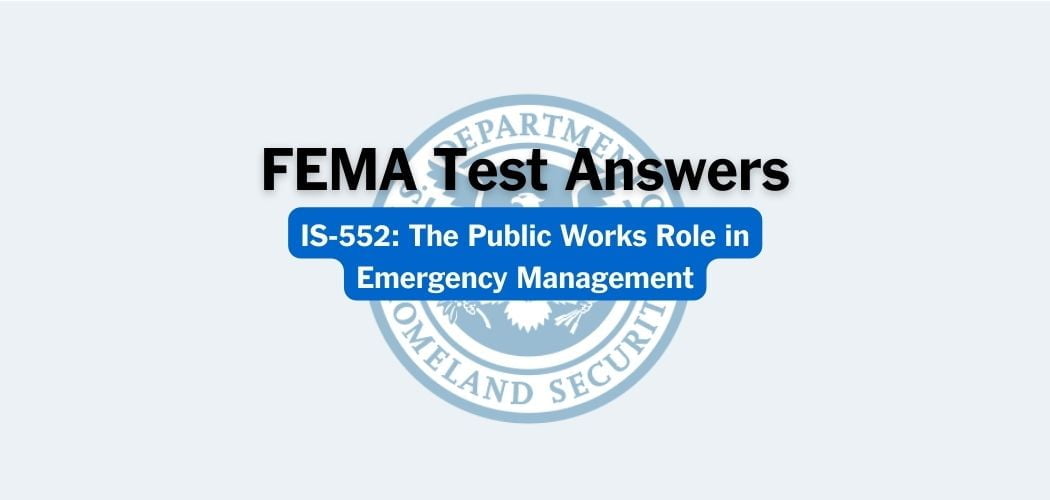Overview: FEMA IS-662 course was published on 10/31/2013 to enhance all aspects of emergency management: preparedness, protection, response, recovery, and mitigation. They do so by engaging in activities such as information sharing, emergency planning, emergency communications, and resource sharing.
Course objectives: FEMA IS-662 describes how to establish and sustain public-private partnerships, as well as how to communicate and share resources in a partnership.
FEMA IS-662 test answers
Each time that this test is loaded, you will receive a unique set of questions and answers. The test questions are scrambled to protect the integrity of the exam.
Question 1. In a public-private partnership, it is NOT essential for:
A. Partners to have complementary strengths.
B. The partnership to have a common mission.
C. The partnership to receive federal funding.✅
D. The partnership to enhance or fill a gap in emergency management.
Question 2. How can a public-private partnership improve the emergency management system?
A. Prevent the duplication of response and recovery efforts through information sharing.✅
B. Replace public emergency management services in rural areas.
C. Relieve FEMA of duties to help the private sector recover after disasters.
D. Raise and donate money for public emergency management services.
Question 3. Which of the following should NOT be a responsibility of a private sector representative in an Emergency Operations Center (EOC)?
A. The representative should facilitate emergency communications between the public and private sectors.
B. The representative should advocate for private sector and constituent interests in the EOC.
C. The representative should be able to promise any resources from private sector partners to emergency response efforts.✅
D. The representative should relay information from other members of the partnership to the EOC.
Question 4. The Union County Public-Private Partnership is dedicated to hurricane preparedness, response, and recovery. What should the Union County Public-Private Partnership NOT include in its resource-sharing plan?
A. Rule stating that the partnership is not liable for any damage to resources during a hurricane.✅
B. Conditions that trigger the use of shared resources during an incident.
C. Information about who ‘owns’ or will provide shared resources.
D. Guidance for what resources are available during preparedness, response or recovery.
Question 5. Which of the following is a best practice in resource management and sharing in a public-private partnership?
A. Preventing private sector organizations from using public sector resources.
B. Identifying resource-sharing opportunities during the establishment of a partnership.✅
C. Requiring all partners to commit physical resources to the partnership.
D. Relying on public sector organizations to provide most resources.
Question 6. Resource request procedures should ________.
A. Be separate from any information-sharing network in order to prevent improper dissemination of information.
B. Limit requests to paying members of partnerships.
C. Prevent public organizations from accessing private resources unless they are responding to an incident.
D. Be established before an incident.✅
Question 7. Which of the following statements about improper dissemination of information is true?
A. The improper dissemination of information is a legitimate public safety and security concern for all partners.✅
B. Partners should never share sensitive information within a partnership in order to safeguard against improper dissemination.
C. Only private sector organizations worry about improper dissemination of information because they worry about trade secrets.
D. Private sector organizations should not share information with each other, only with the public sector.
Question 8. When discussing the value of a partnership with partners, you should ask likely partners if:
A. They agree with the common mission of the partnership.
B. They are interested in sharing the benefits of the new partnership.
C. They have needs or capabilities to bring to the partnership.
D. All of the above.✅
Question 9. In a large metropolitan city, several management companies of large high-rises in the downtown area partnered with the local emergency management agency. The partnership’s goal is to create a comprehensive evacuation and emergency response plan for the downtown area, which requires the management companies to share sensitive floor and building plans. How should the companies share this information?
A. They should use an email listserv to share that information with all partners.
B. They should create a secure information-sharing network which encrypts all data and limits access to that data.✅
C. They should post it to their websites to allow anyone to plan an evacuation route.
D. They should send the information as hard copies to all partners.
Question 10. Which of the following statements about emergency communications is true?
A. Situational reporting is used by partnerships to communicate updates to the general public.
B. Direct communication should not be used at all during emergencies because it is inefficient.
C. Incident alerts should include detailed, actionable information which can be used to inform partners’ responses.✅
D. All public-private partnerships should use the Homeland Security Information Network (HSIN) for emergency communications.
Question 11. The Northwest Emergency Alliance is a public-private partnership between tribal nations, local and state emergency managers, and private businesses. The goal of the partnership is to help local communities recover from natural disasters. Recently, after a devastating flood, there was some miscommunication between partners and resources promised during the establishment of the partnership were not deployed appropriately. What steps should the Northwest Emergency Alliance take to strengthen its partnership?
A. The partnership should put one individual in charge of promising and deploying resources.
B. The partnership should get rid of those partners who did not provide resources as promised.
C. The partnership should revisit the value proposition to make sure partners still have the same capabilities.✅
D. The partnership should leave all emergency response efforts up to the public sector.
Question 12. Potential public-private partnership resources could:
A. Support any aspect of the emergency management system.
B. Be supplied for a cost.
C. Be a service.
D. All of the above.✅
Question 13. Which of the following activities is NOT a best practice in strengthening partnership collaboration?
A. Identifying training and resource needs.
B. Requiring partners to sign contracts ensuring they will contribute to the partnership.✅
C. Sharing best practices.
D. Recognizing partner contributions.
Question 14. According to what you learned in this course, which of the following is a sign that a public-private partnership might be in trouble?
A. The partnership does not have a visionary leader.
B. The partnership has not supported the response to any incidents.
C. Partners do not share physical resources.
D. The partners do not communicate regularly.✅
Question 15. As outlined in this course, which of the following is NOT a step in establishing a public-private partnership?
A. Identify likely partners.
B. Define the purpose and objectives of partnership.
C. Discuss the value of partnership with likely partners.
D. Create a resource-sharing inventory.✅
Question 16. Which statement best explains why it is important to reevaluate the value proposition?
A. Revisiting the value proposition will determine which partners need to leave the partnership.
B. Inevitably, partners will find the partnership less valuable over time, so the value proposition should be reevaluated.
C. The value proposition of the partnership may change over time, and revisiting that value proposition ensures that the partnership still makes the best use of partnership capabilities.✅
D. It is not important to revisit the value proposition.



